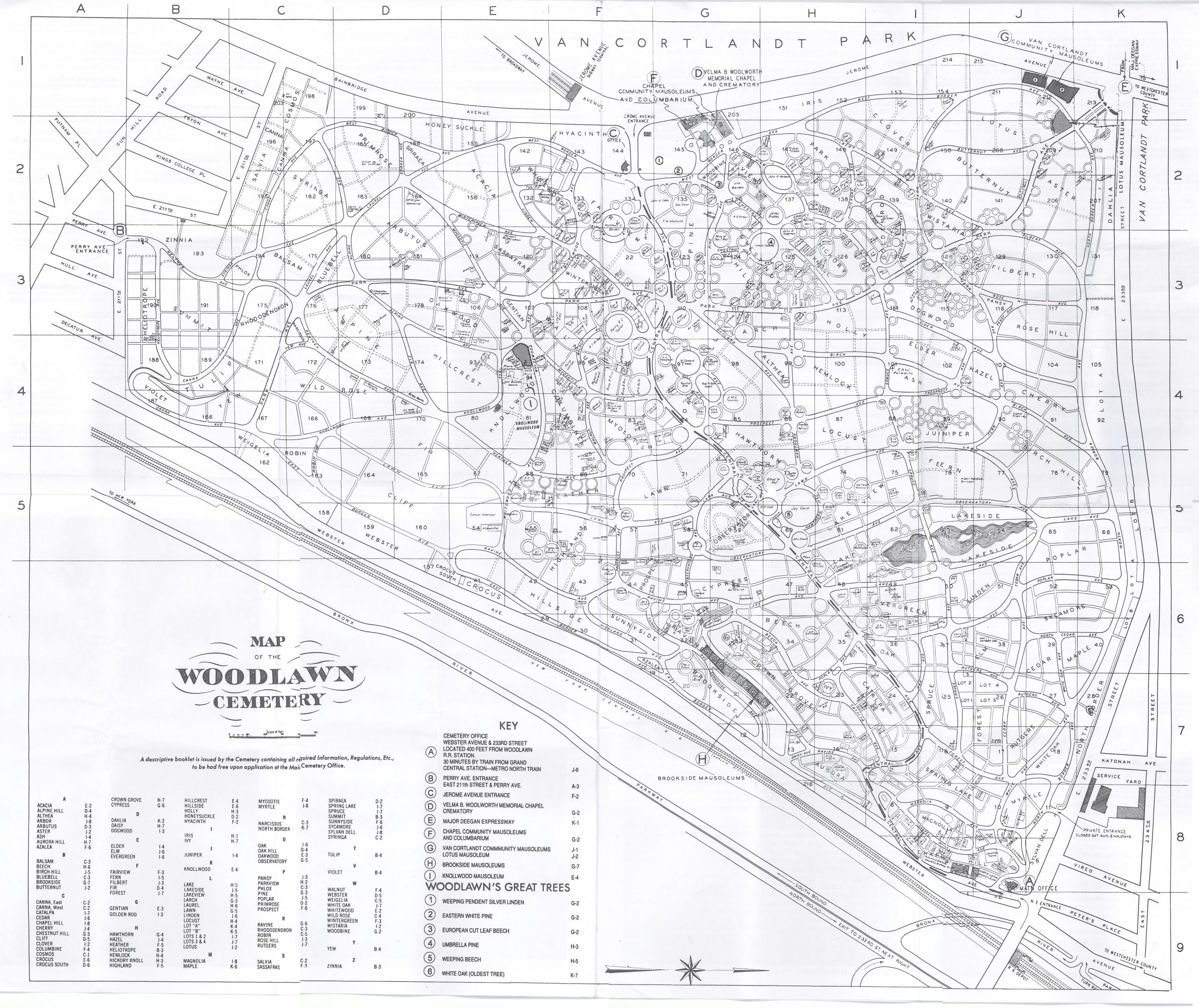Frank Winfield Woolworth
Fun Fact
Frank Woolworth had an absolute hatred of going to the dentist, a prejudice that led to his death in April 1919, when he died suddenly due to a tooth infection at his Glen Cove Estate. Unbelievably, he died with his will unsigned, and all the money (about $30 million) went to his wife Jennie.
Sadly at the time of Frank’s death, Jennie was having problems all her own, having been declared ‘mentally feeble‘ and legally incompetent by this time. “DEMENTED WIFE GETS ALL” screamed an not-so-subtle New York Times headline. However historians now believe it appears from the description of her condition that Mrs. Woolworth was suffering from was Alzheimer’s.
Cemetery Information:
Final Resting Place:
Woodlawn Cemetery
4199 Webster Avenue
Bronx, New York, 10470
USA
North America
Map:

Grave Location:
Pine Plot, Section 135, Woolworth MausoleumGrave Location Description
From the Jerome Avenue entrance, drive straight ahead on Central Avenue (it’s the painted road that runs through the center of the cemetery) and shortly after you cross West Border Avenue you will see the large Woolworth Mausoleum on your left about 80 feet from the road.
Grave Location GPS
40.8886888, -73.87586407Visiting The Grave:
Photos:
FAQ's
Read More About Frank Winfield Woolworth:
- Wikipedia Entry
- Woolworths: The Surprising Things We Didn’t Know About Our Treasured Store
- Photo history of the Woolworth family
- The many mysterious and tragic events that befell the Woolworths after constructing the Woolworth Building
- For Sale: “Winfield Hall” Former F. W. Woolworth Estate
- A Trip Through the Past With Five and Dime Stores
- What Happened To All the Woolworths?
- What can you get for a nickel?
- Official Woolworth Building Website










